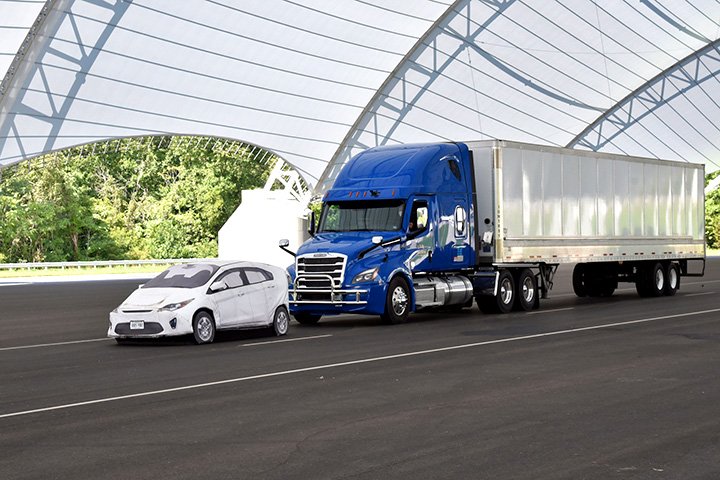WASHINGTON — The U.S. Department of Transportation’s (USDOT) National Highway Traffic Safety Administration (NHTSA) and Federal Motor Carrier Safety Administration (FMCSA) have announced a Notice of Proposed Rulemaking (NPRM) that would require new heavy vehicles to be equipped with automatic emergency braking (AEB) systems.
In a joint news release issued on Thursday, June 22, the agencies said that that AEB systems “will mitigate the frequency and severity of rear-end crashes.”
“Advanced driver assistance systems like AEB have the power to save lives,” said NHTSA Chief Counsel Ann Carlson. “Today’s announcement is an important step forward in improving safety on our nation’s roadways by reducing, and ultimately eliminating, preventable tragedies that harm Americans.”
In a statement, the American Trucking Associations lauded the proposal.
“ATA has long supported the use of AEB on all new vehicles,” said ATA Vice President of Safety Policy Dan Horvath. “With NHTSA’s recent regulation requiring AEB on all new passenger vehicles, this proposal for heavy duty trucks is timely and appropriate.”
Horvath added that “The trucking industry supports the use of proven safety technology like automatic emergency braking. We look forward to reviewing this proposal from NHTSA and FMCSA and working with them as it is implemented.”
In 2015, ATA urged car and truck manufacturers to make AEB standard equipment on new vehicles, and in 2021, the association supported legislation that would have mandated AEB technology on new Class 7 and 8 trucks.
An AEB system uses multiple sensor technologies that work together to detect a vehicle in a crash imminent situation.
The system automatically applies the brakes if the driver has not done so, or, if needed, applies more braking force to supplement the driver’s braking. The proposed standard would require the technology to work at speeds ranging between low-speed (6 miles per hour) and high-speed (roughly 50 miles per hour) situations.
“Establishing AEB standards is a key component of the Department’s National Roadway Safety Strategy,” said FMCSA Administrator Robin Hutcheson. “This technology can enhance the effectiveness of commercial motor vehicle crash reduction strategies and reduce roadway fatalities.”
According to NHTSA statistics, there are approximately 60,000 rear-end crashes a year in which the heavy vehicle is the striking vehicle. Once implemented, NHTSA estimates the proposed rule will prevent 19,118 crashes, save 155 lives and prevent 8,814 injuries annually.
NHTSA and FMCSA incorporated feedback from the safety advocacy community, industry representatives and other interested parties to address this critical safety need on America’s roads.
The proposed rule, which fulfills a mandate under the Bipartisan Infrastructure Law, defines “heavy vehicles” as those having a gross vehicle weight greater than 10,000 pounds, such as heavy-duty trucks and buses.
NHTSA proposed a similar rule that would require AEB systems in passenger vehicles and light trucks.
In January 2022, USDOT released the National Roadway Safety Strategy, a roadmap to address the national crisis in motor vehicle fatalities and serious injuries.
USDOT also launched the next phase of the NRSS, the Call to Action campaign and released a one-year progress report with accompanying data visualizations that highlight the extent and magnitude of the U.S. roadway safety problem and ways to eventually bring the number of deaths on our roadways to zero.
Public comments on the proposed rule will be accepted for 60 days. Click here to learn more about the rulemaking process.
The Trucker News Staff produces engaging content for not only TheTrucker.com, but also The Trucker Newspaper, which has been serving the trucking industry for more than 30 years. With a focus on drivers, the Trucker News Staff aims to provide relevant, objective content pertaining to the trucking segment of the transportation industry. The Trucker News Staff is based in Little Rock, Arkansas.















